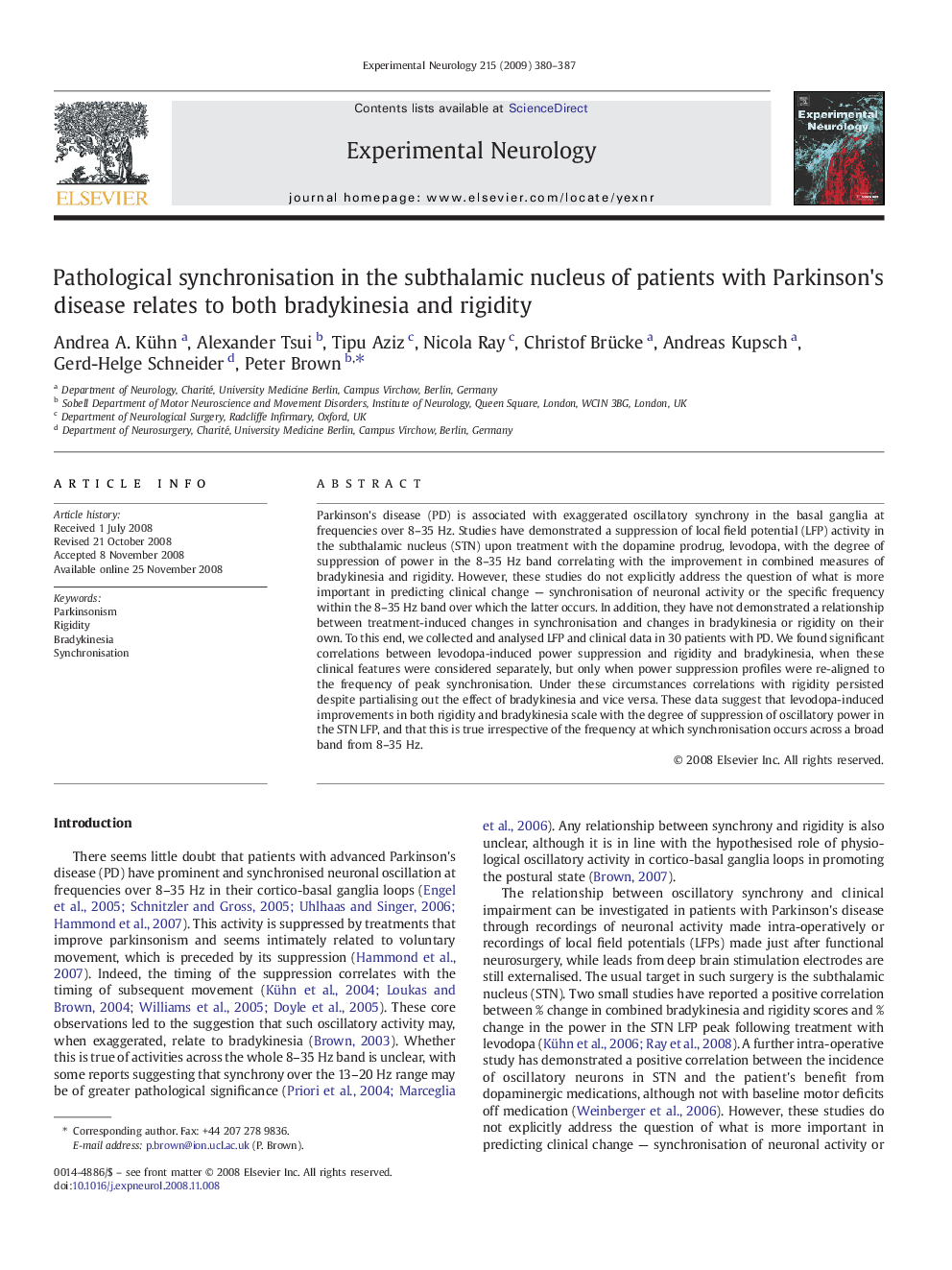| Article ID | Journal | Published Year | Pages | File Type |
|---|---|---|---|---|
| 3056642 | Experimental Neurology | 2009 | 8 Pages |
Parkinson's disease (PD) is associated with exaggerated oscillatory synchrony in the basal ganglia at frequencies over 8–35 Hz. Studies have demonstrated a suppression of local field potential (LFP) activity in the subthalamic nucleus (STN) upon treatment with the dopamine prodrug, levodopa, with the degree of suppression of power in the 8–35 Hz band correlating with the improvement in combined measures of bradykinesia and rigidity. However, these studies do not explicitly address the question of what is more important in predicting clinical change — synchronisation of neuronal activity or the specific frequency within the 8–35 Hz band over which the latter occurs. In addition, they have not demonstrated a relationship between treatment-induced changes in synchronisation and changes in bradykinesia or rigidity on their own. To this end, we collected and analysed LFP and clinical data in 30 patients with PD. We found significant correlations between levodopa-induced power suppression and rigidity and bradykinesia, when these clinical features were considered separately, but only when power suppression profiles were re-aligned to the frequency of peak synchronisation. Under these circumstances correlations with rigidity persisted despite partialising out the effect of bradykinesia and vice versa. These data suggest that levodopa-induced improvements in both rigidity and bradykinesia scale with the degree of suppression of oscillatory power in the STN LFP, and that this is true irrespective of the frequency at which synchronisation occurs across a broad band from 8–35 Hz.
